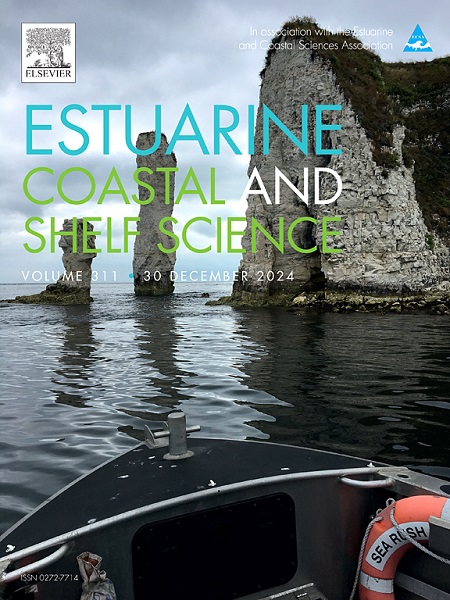Seasonal and spatial distribution of trace metals and bacteria on beached plastics in the Adriatic sea
IF 2.6
3区 地球科学
Q1 MARINE & FRESHWATER BIOLOGY
引用次数: 0
Abstract
Marine plastic litter (MPL) is a significant threat to marine ecosystems, acting as a carrier for pollutants like trace metals (TM) and microbial communities whose distribution in intertidal zones’ sediment and seawater suggests potential environmental and health risk for coastal areas. The Adriatic Sea has been identified as a hotspot for MPL accumulation. This study is the first to investigate the interaction of MPL and sediment with TM and bacteria along the eastern Adriatic coast. MPL, sediment and seawater were collected from the intertidal zone of three beaches before and after the tourist season. A total of six different polymer types were detected, with polypropylene (PP) and polyethylene (PE) being the most prevalent. PP showed the greatest variability in metal adsorption, with Zn being the most adsorbed metal on all polymers and at all locations and seasons. Cd and Co exhibited the lowest amounts adsorbed. The amounts of adsorbed metals on plastics showed a similar pattern to the TM levels in seawater and sediment. The bacterial assemblages suggest that the distribution of certain bacterial genera on MPL and in the sediment was influenced by both location and season. The bacterial communities on plastics and in sediment showed different taxonomic compositions with the genera Bacillus, Exiguobacterium and Psychrobacter dominated on the plastic samples, while Vibrio species predominated in the sediment. This work elucidates the interaction and distribution of TM and bacteria between beached MPL and sediment in coastal environments of the Adriatic Sea and may contribute to similar studies in other coastal environments affected by MPL accumulation.

亚得里亚海海滩塑料上痕量金属和细菌的季节和空间分布
海洋塑料垃圾(MPL)是海洋生态系统的重大威胁,是微量金属(TM)和微生物群落等污染物的载体,它们在潮间带沉积物和海水中的分布表明沿海地区存在潜在的环境和健康风险。亚得里亚海已被确定为MPL聚集的热点。这项研究首次研究了亚得里亚海东部海岸MPL和沉积物与TM和细菌的相互作用。在旅游季前后采集了3个海滩潮间带的MPL、沉积物和海水。共检测到六种不同的聚合物类型,其中聚丙烯(PP)和聚乙烯(PE)最为普遍。PP在金属吸附方面表现出最大的变异性,在所有的聚合物上,在所有的位置和季节,锌是吸附最多的金属。Cd和Co的吸附量最低。塑料上吸附金属的数量与海水和沉积物中的TM水平显示出相似的模式。细菌组合表明,某些细菌属在MPL和沉积物中的分布受位置和季节的影响。塑料样品和沉积物中的细菌群落表现出不同的分类组成,塑料样品上以芽孢杆菌属、出口杆菌属和冷杆菌属为主,而沉积物中以弧菌属为主。这项工作阐明了亚得里亚海沿岸环境中搁浅的MPL与沉积物之间的TM和细菌的相互作用和分布,并可能有助于在其他受MPL积累影响的沿海环境中进行类似的研究。
本文章由计算机程序翻译,如有差异,请以英文原文为准。
求助全文
约1分钟内获得全文
求助全文
来源期刊
CiteScore
5.60
自引率
7.10%
发文量
374
审稿时长
9 months
期刊介绍:
Estuarine, Coastal and Shelf Science is an international multidisciplinary journal devoted to the analysis of saline water phenomena ranging from the outer edge of the continental shelf to the upper limits of the tidal zone. The journal provides a unique forum, unifying the multidisciplinary approaches to the study of the oceanography of estuaries, coastal zones, and continental shelf seas. It features original research papers, review papers and short communications treating such disciplines as zoology, botany, geology, sedimentology, physical oceanography.

 求助内容:
求助内容: 应助结果提醒方式:
应助结果提醒方式:


